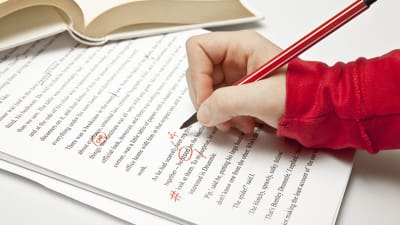So you’ve just finished a piece of writing—a cover letter, maybe, or a blog post. You have checked the spelling and grammar, corrected the typos, and removed any extra spaces. Good job! But you still have one more element to keep in mind: consistency.
While not mistakes in and of themselves, inconsistencies in your copy (for example, spelling the color gray with an a in some spots but with an e in others) can look messy and feel jarring to your readers, distracting them from your sparkling prose.
Also on Mediabistro


To keep articles as consistent as possible, copy editors use a tool called a style sheet. A style sheet is a running document of all the stylistic choices you make regarding capitalization, numbers, punctuation, spelling, display type (e.g., headlines and subheads) and more.
Say you’ve started a comprehensive blog about your favorite television show of all time, The Sopranos (congratulations on your good—if not necessarily timely— taste!) and will give your take on every episode from the beginning of the series. Here are just a few stylistic choices you’d need to make in order to maintain consistency from recap to recap.
Characters: Will you refer to characters by first and last name? First only? Are nicknames acceptable? If yes, for which characters?
Episodes: Will you list episodes by their title (“College”)? Or by their season and episode number (Season 1, Episode 5)? Or perhaps a shorthand code (S1, E5)?
Foreign terms Will you italicize unfamiliar foreign terms, most likely Italian in this case? Or leave them in regular type (aka roman type)?
Profanity If quoting dialogue that contains profanity, will you spell out those terms completely? Or block out letters instead? If you decide to block out letters, will you use dashes as a substitution (f- – – ) or asterisks (f***)? If you pick asterisks, will you substitute just one letter (f*ck)? Or every letter in the word besides the first (f***)?
Slang terms How will you spell the Sopranos’ dialectal word pronunciations? Will capicola, a deli meat popular with Tony and his crew, appear as gabbagool? Or cappa col?
However you decide to answer these questions is up to you. No matter what you decide, it’s crucial to document each decision on your style sheet (providing examples when helpful and noting exceptions when necessary) and to follow those decisions consistently.
Although maintaining a style sheet may seem tedious and time-consuming, you’ll end up helping your readers and yourself. Your readers will be treated to smoother copy—and will be more likely to stick with it.
Your work will look more professional—and you won’t have to rely on memory, or research the same questions again and again, or scroll through old posts to find out how you had styled something in the past.
You’ll also be assisting anyone who works on your site in the future, be it a guest blogger or a copy editor or a proofreader. A style sheet ensures you’ll all be operating by the same set of rules, which will save time, energy, and trouble in the long run. Holla!
Take your copyediting and proofreading skills to the next level with a Mediabistro Online Copyediting Course.











